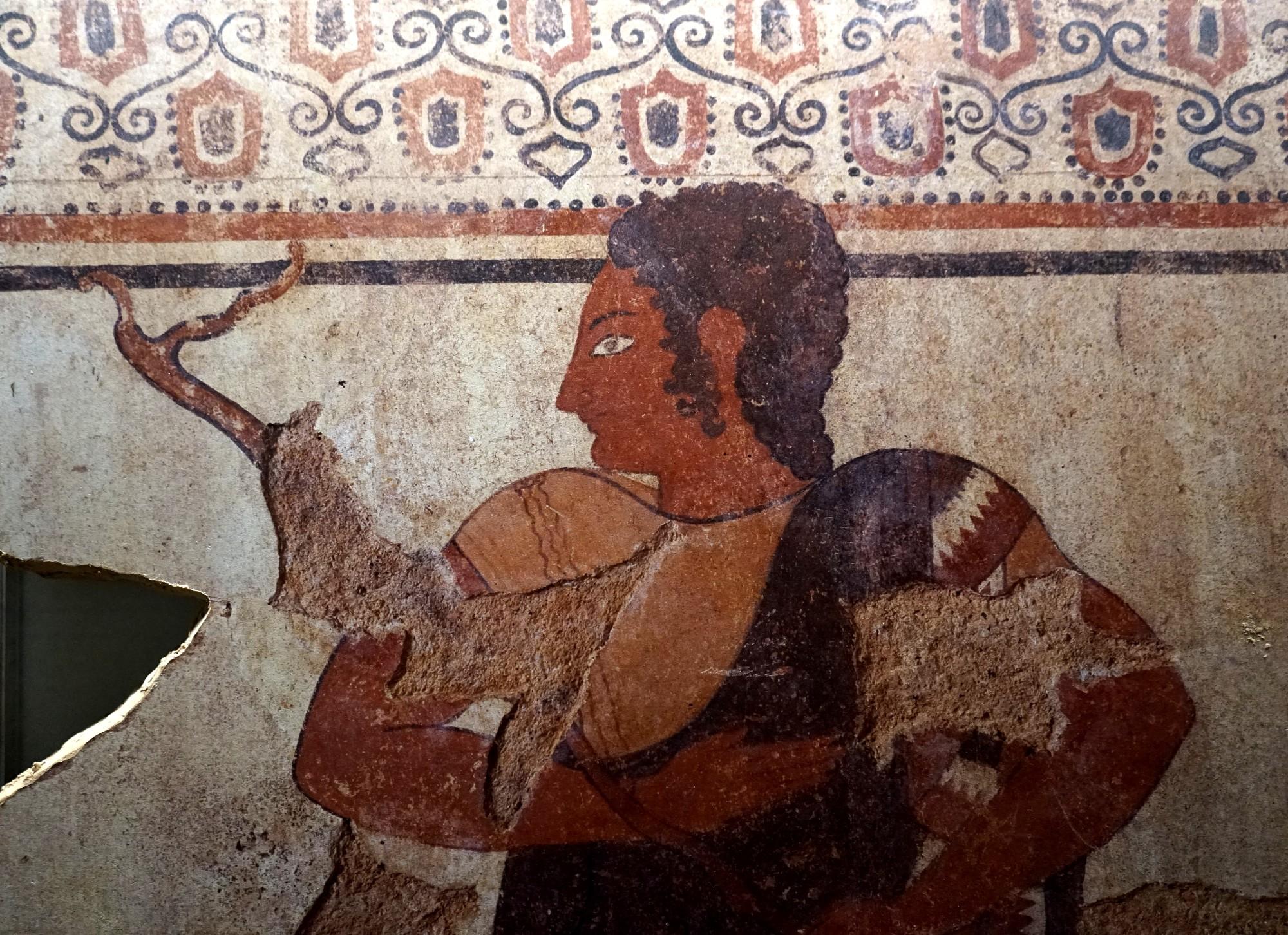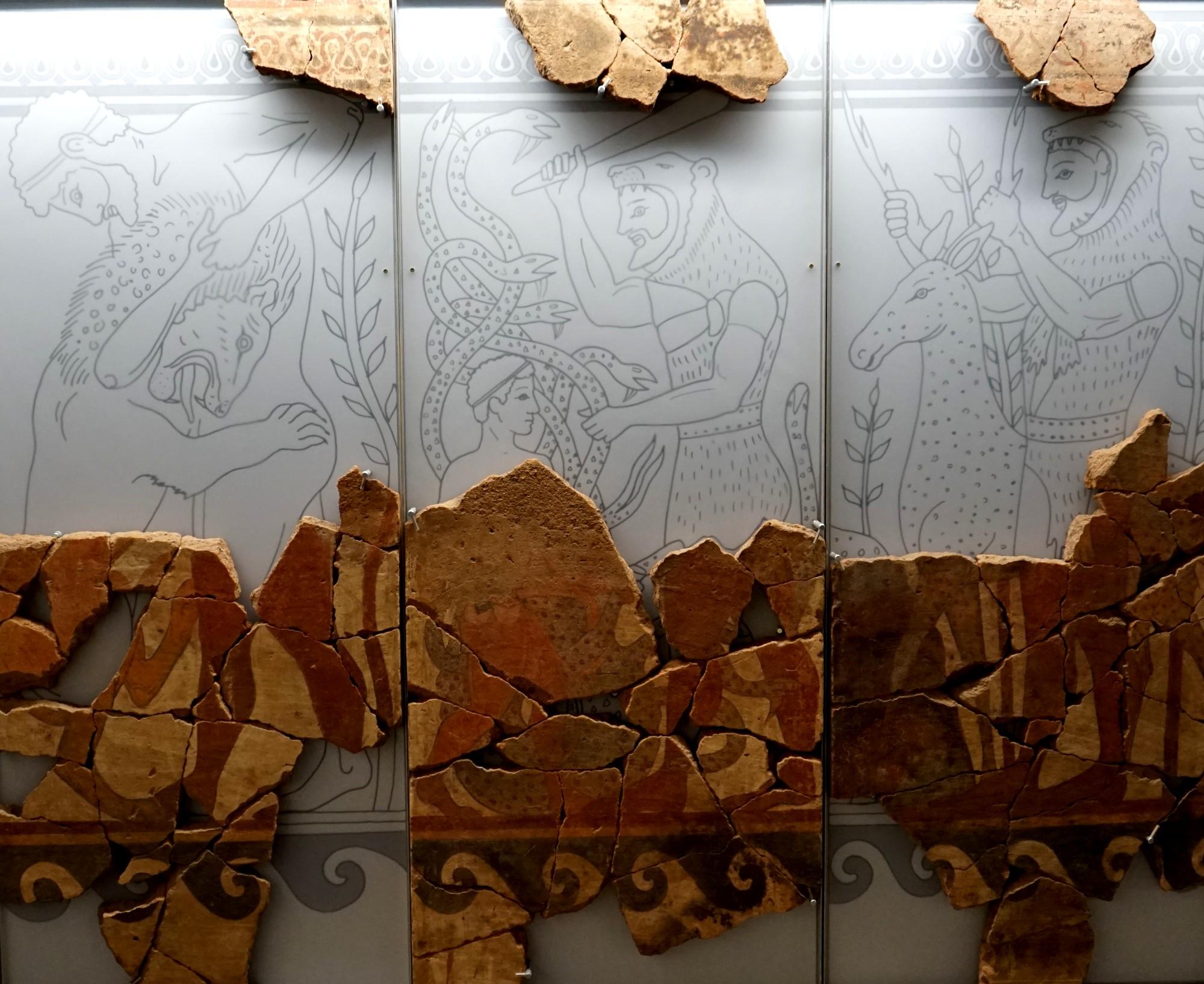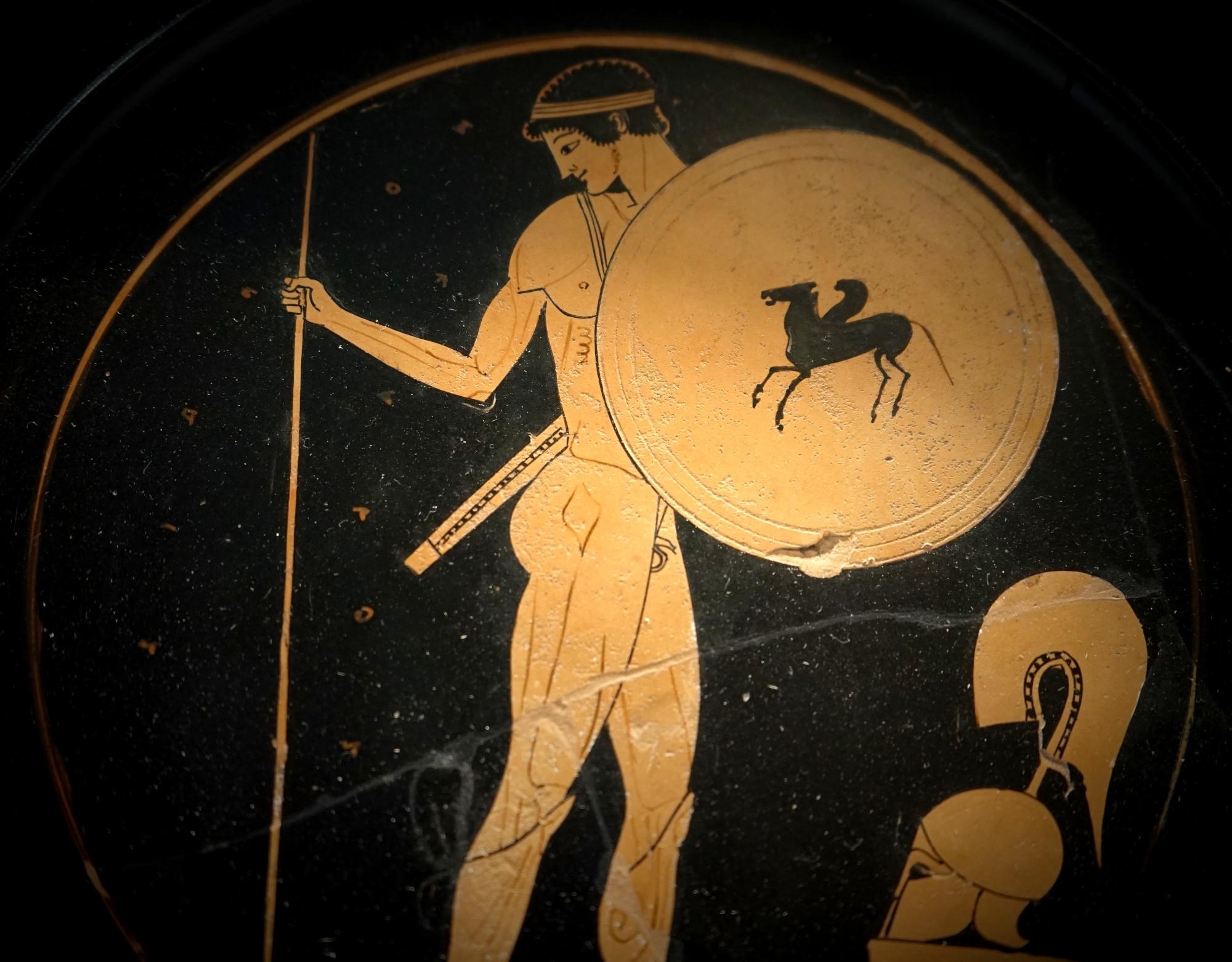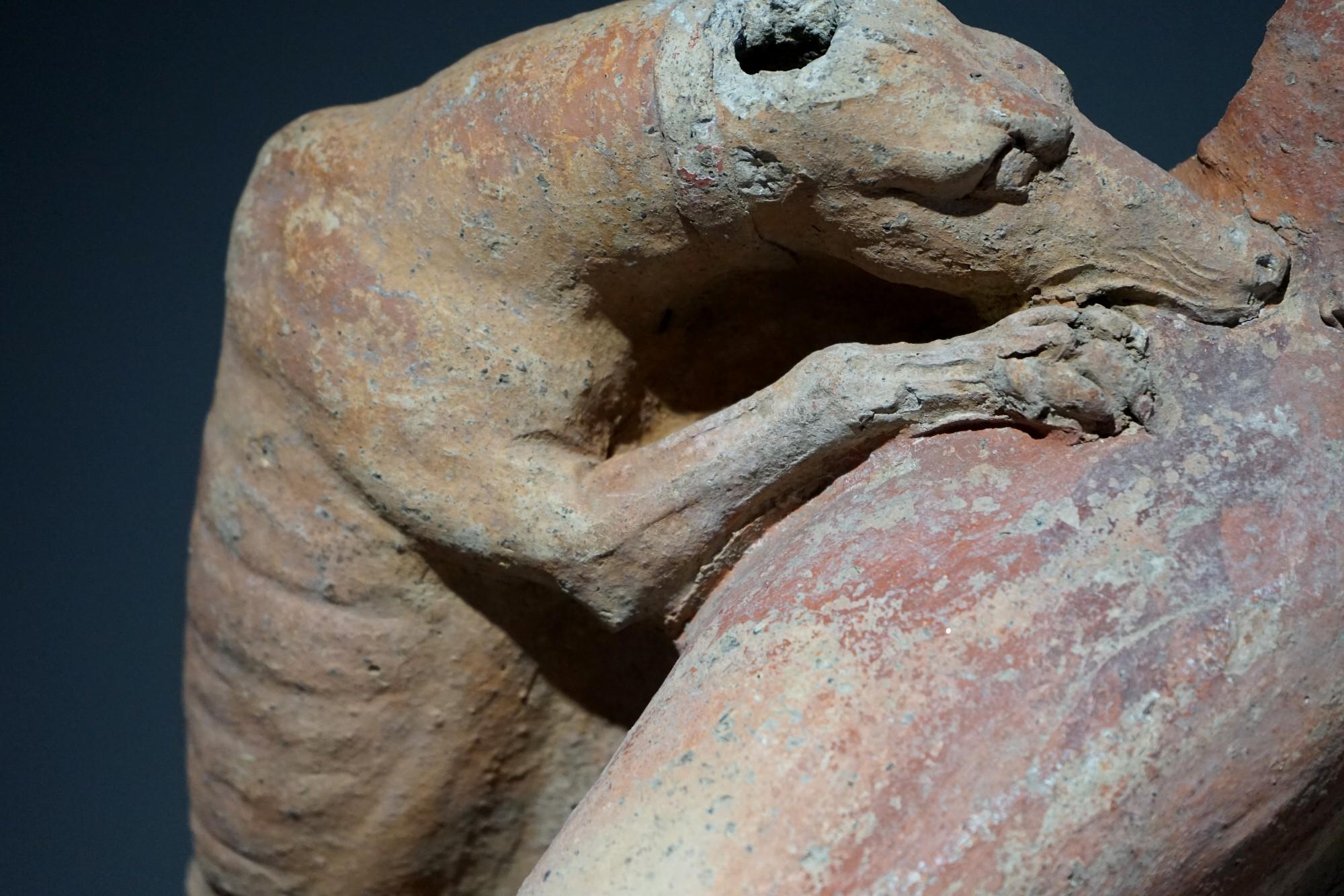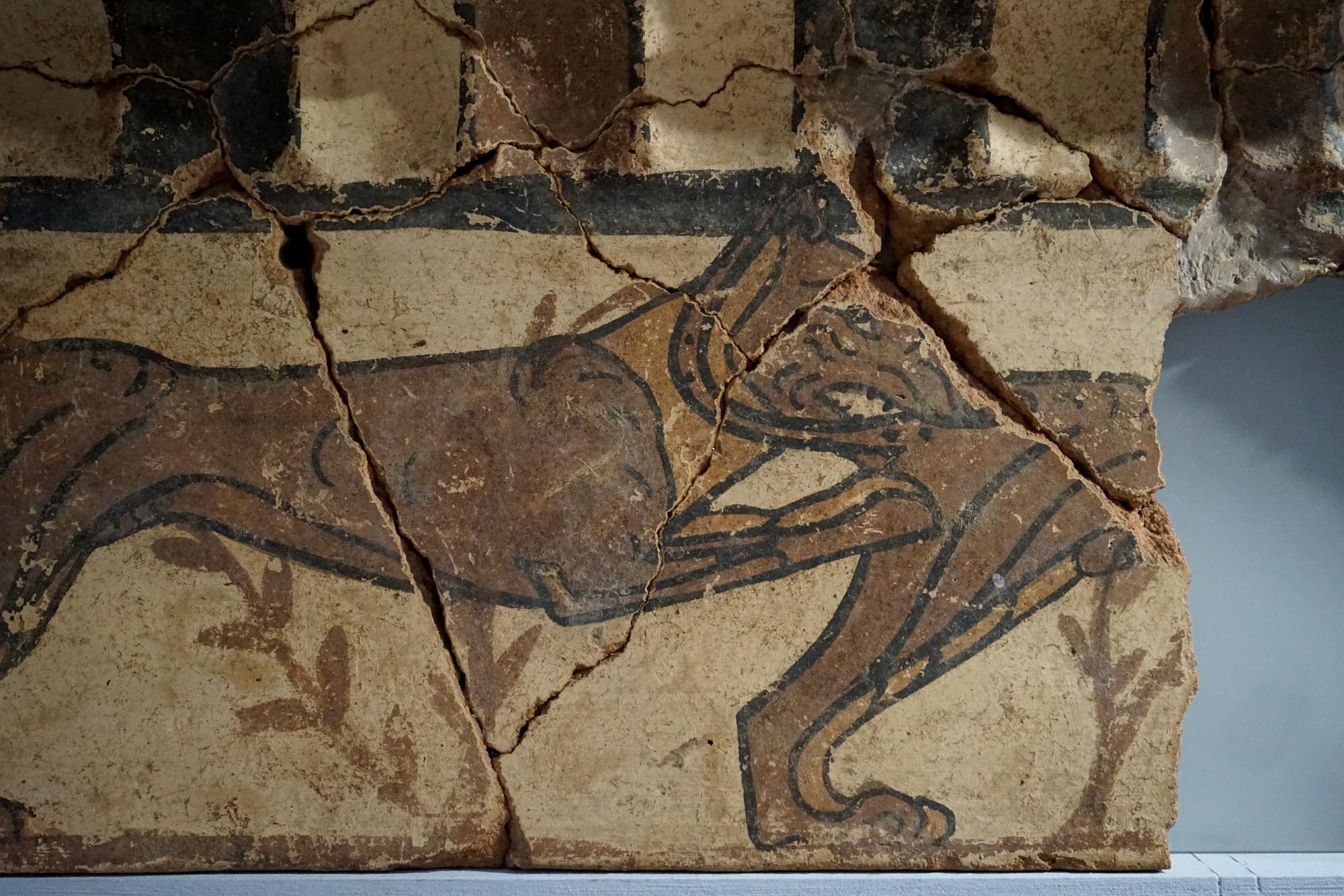A number of themes are explored in the exhibition. Etruscan myths are represented by nine large panels showing the exploits of Hercules, who was a major cult figure across the ancient Mediterranean. Damaged to the point that approximately only the bottom third of each panel remains, the hero is nevertheless identifiable by the labors he is performing, such as wrestling the Nemean lion or battling the many-headed hydra.
Scenes painted on other terracotta panels reveal Etruscan aristocratic interests in dance and athletics, while helmeted figures brandishing weapons emphasize the centrality of warfare in ancient life. This showcasing of Etruscan culture is supplemented by other objects, including bronze armor, statues, and a varied display of exceptional ceramic vessels, some of which were imported to Etruscan communities in Italy from workshops in Greece.




